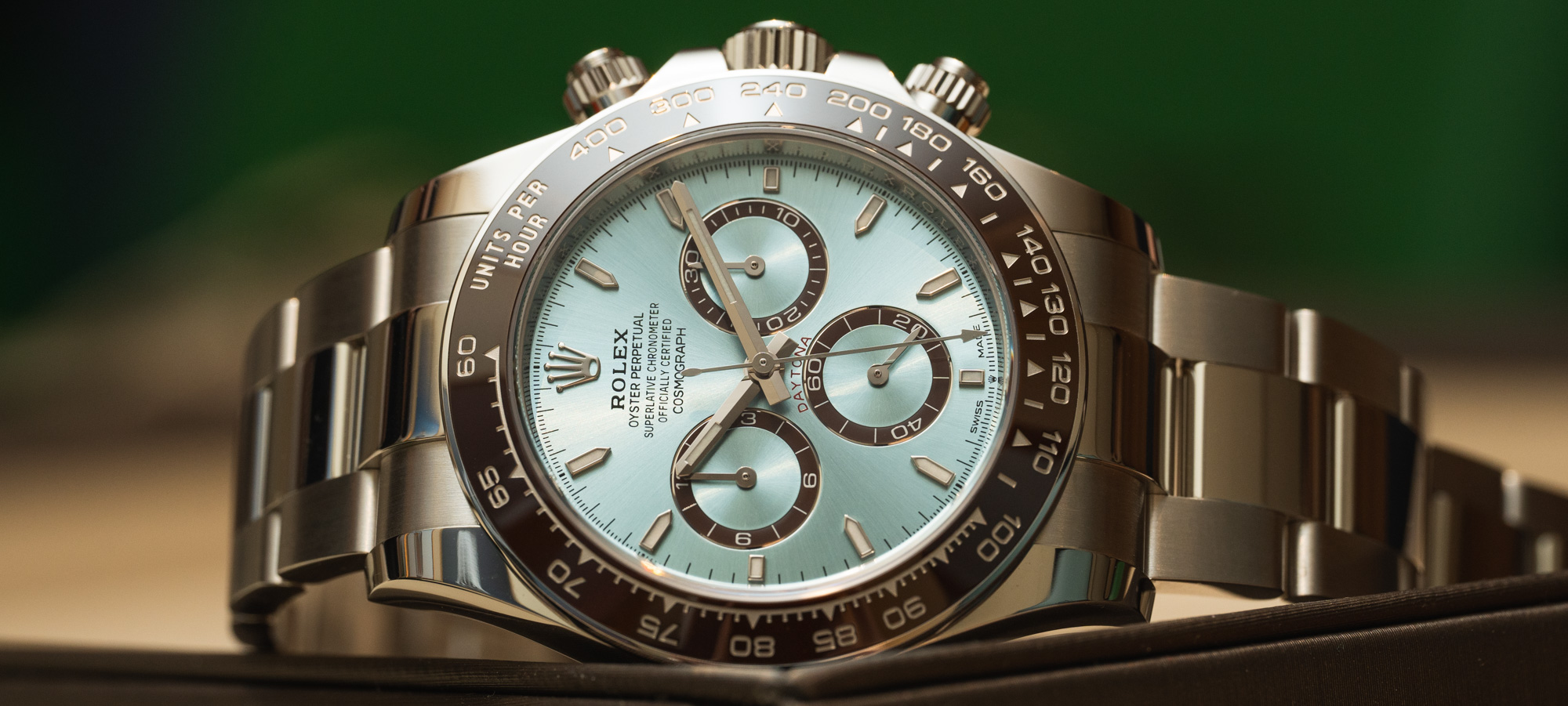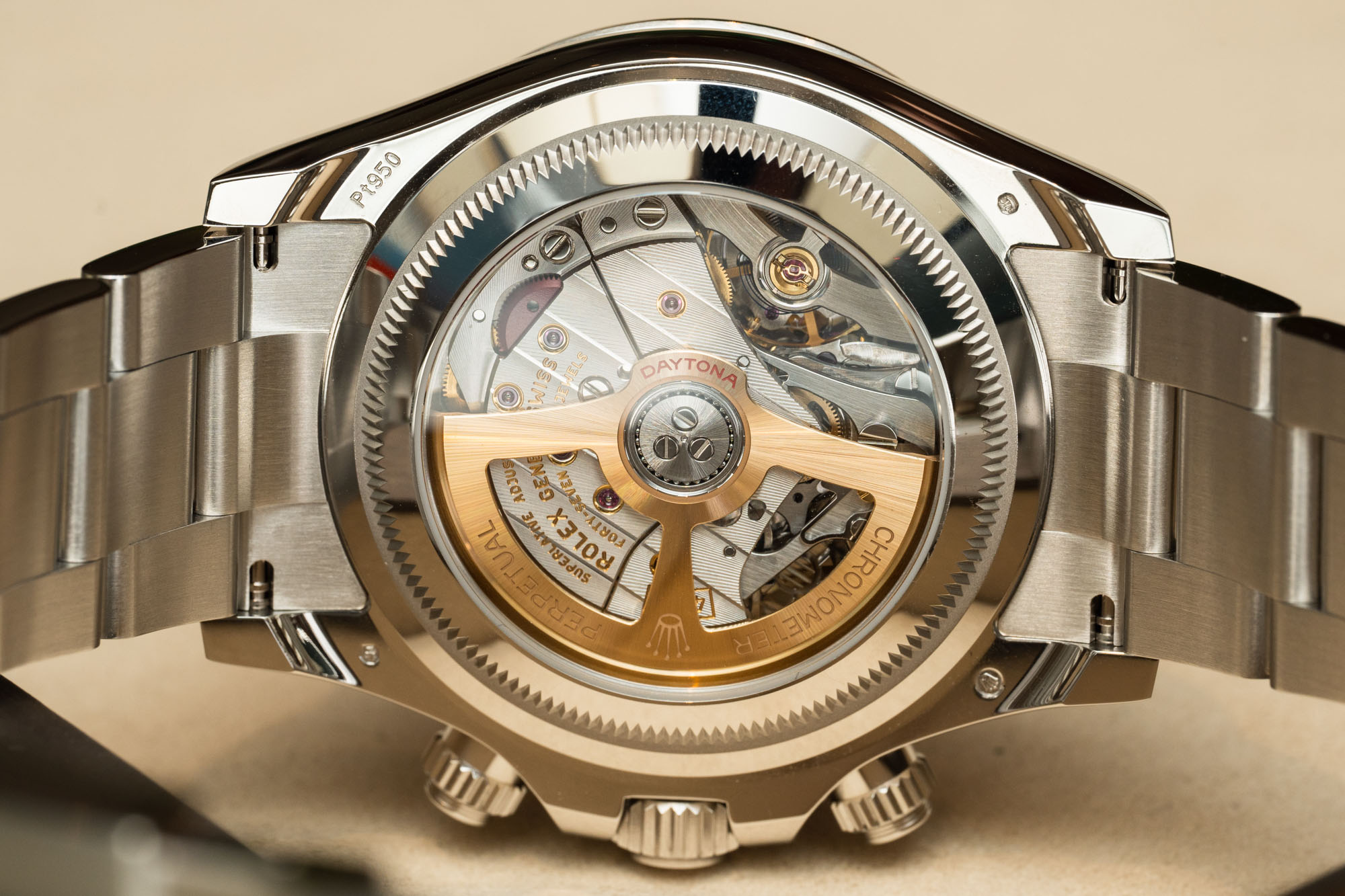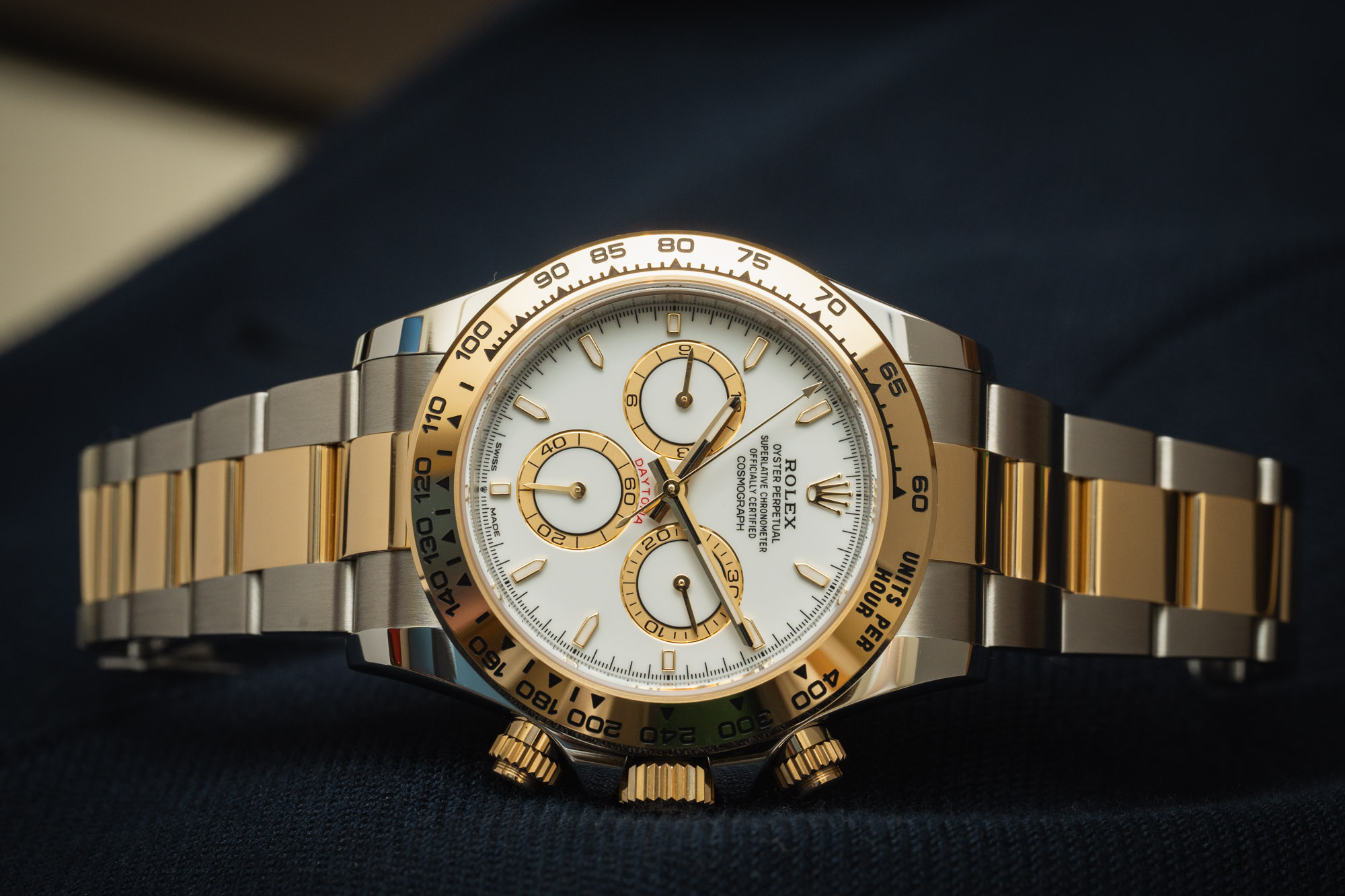 This year at Watches and Wonders 2023, Rolex once again broke the watch world with a new Daytona release. Being the 60th anniversary of the watch’s original release, this really doesn’t surprise anyone. Likewise, the rather incremental changes that Rolex made were no great surprise, because Rolex is an incremental behemoth of a brand, not inclined to make drastic changes. Instead, the brand prefers to gradually shift its models across a number of iterations to get them where it wants them (or abandon them altogether, like it did with the Milgauss and Cellini this year). While this is another year of incremental changes for the Daytona, they’re more substantial than the 2016 update. We got a chance to go hands-on with two of the new Rolex Cosmograph Daytonas at the show, the platinum reference 126506 and the steel and yellow gold reference 126503.
This year at Watches and Wonders 2023, Rolex once again broke the watch world with a new Daytona release. Being the 60th anniversary of the watch’s original release, this really doesn’t surprise anyone. Likewise, the rather incremental changes that Rolex made were no great surprise, because Rolex is an incremental behemoth of a brand, not inclined to make drastic changes. Instead, the brand prefers to gradually shift its models across a number of iterations to get them where it wants them (or abandon them altogether, like it did with the Milgauss and Cellini this year). While this is another year of incremental changes for the Daytona, they’re more substantial than the 2016 update. We got a chance to go hands-on with two of the new Rolex Cosmograph Daytonas at the show, the platinum reference 126506 and the steel and yellow gold reference 126503.
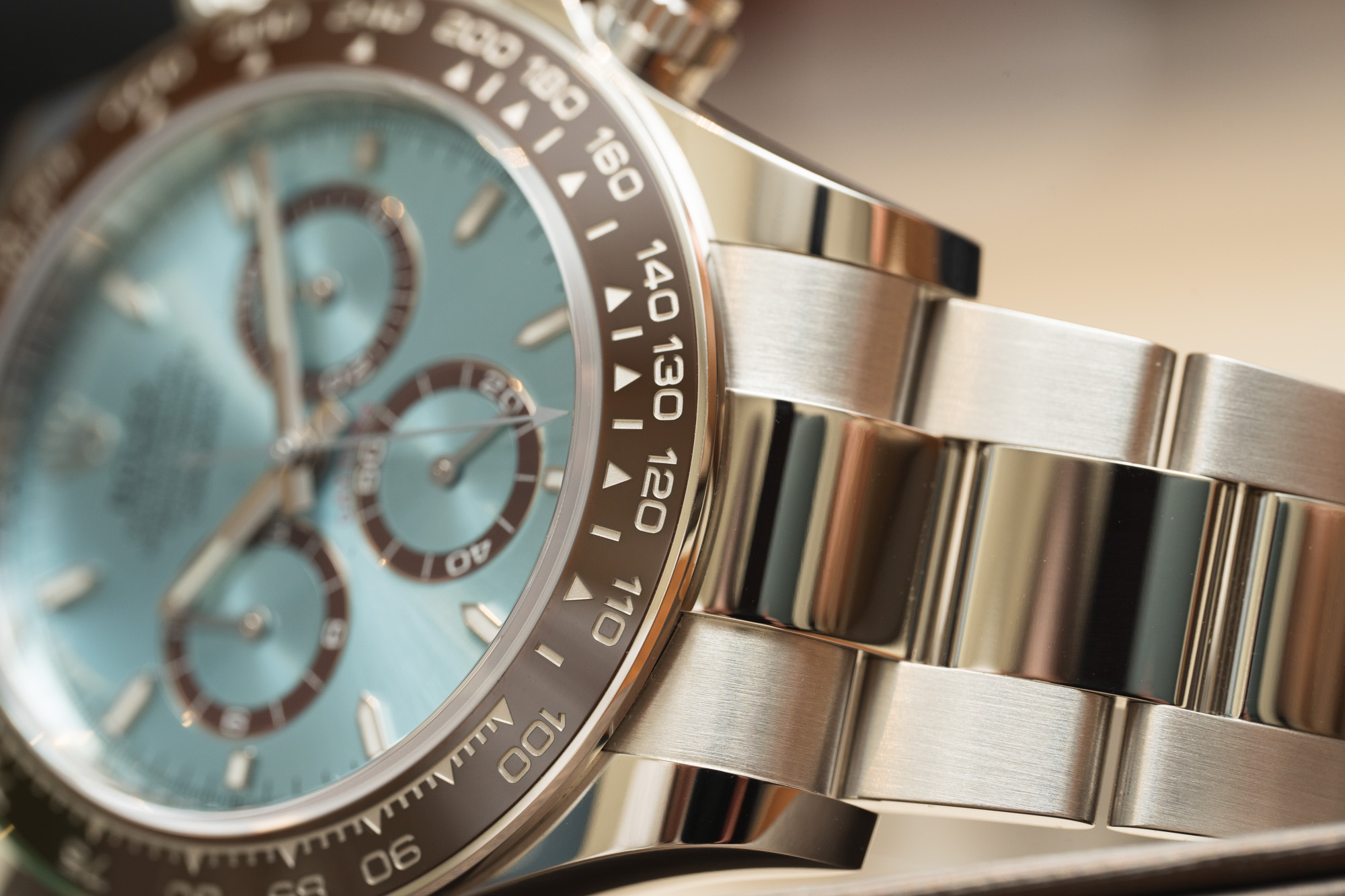 While the immediate aesthetics of the Daytona are unchanged, we know, of course, that the devil is in the details. The 40mm case diameter has remained the same, but the lugs have been slightly enlarged with the goal of making the watch feel a bit more modern. This struck me as ironic since watches are trending smaller, not larger. Rest assured that the Daytona still wears incredibly well: It is, has been, and likely will continue to be one of the best-wearing chronographs on the market.
While the immediate aesthetics of the Daytona are unchanged, we know, of course, that the devil is in the details. The 40mm case diameter has remained the same, but the lugs have been slightly enlarged with the goal of making the watch feel a bit more modern. This struck me as ironic since watches are trending smaller, not larger. Rest assured that the Daytona still wears incredibly well: It is, has been, and likely will continue to be one of the best-wearing chronographs on the market.
But there’s another change that, along with the lug enhancement, does make the watch appear a bit larger. With the 2016 revision, the Daytona received a Cerachrom bezel that took up the entire bezel area, giving it a dramatically wide appearance and making the dial seem a bit smaller than it actually was. Now, on models with the Cerachrom bezel, a small polished ring has been placed around the insert. It thins out the bezel a bit and consequently makes the dial a bit more prominent, while also having a recessed appearance (even though it’s flush), which makes the entire case more present around it. Again, the physical feel of the watch has not changed, but the changes to the lugs and the bezel create a very slightly larger appearance on the wrist.
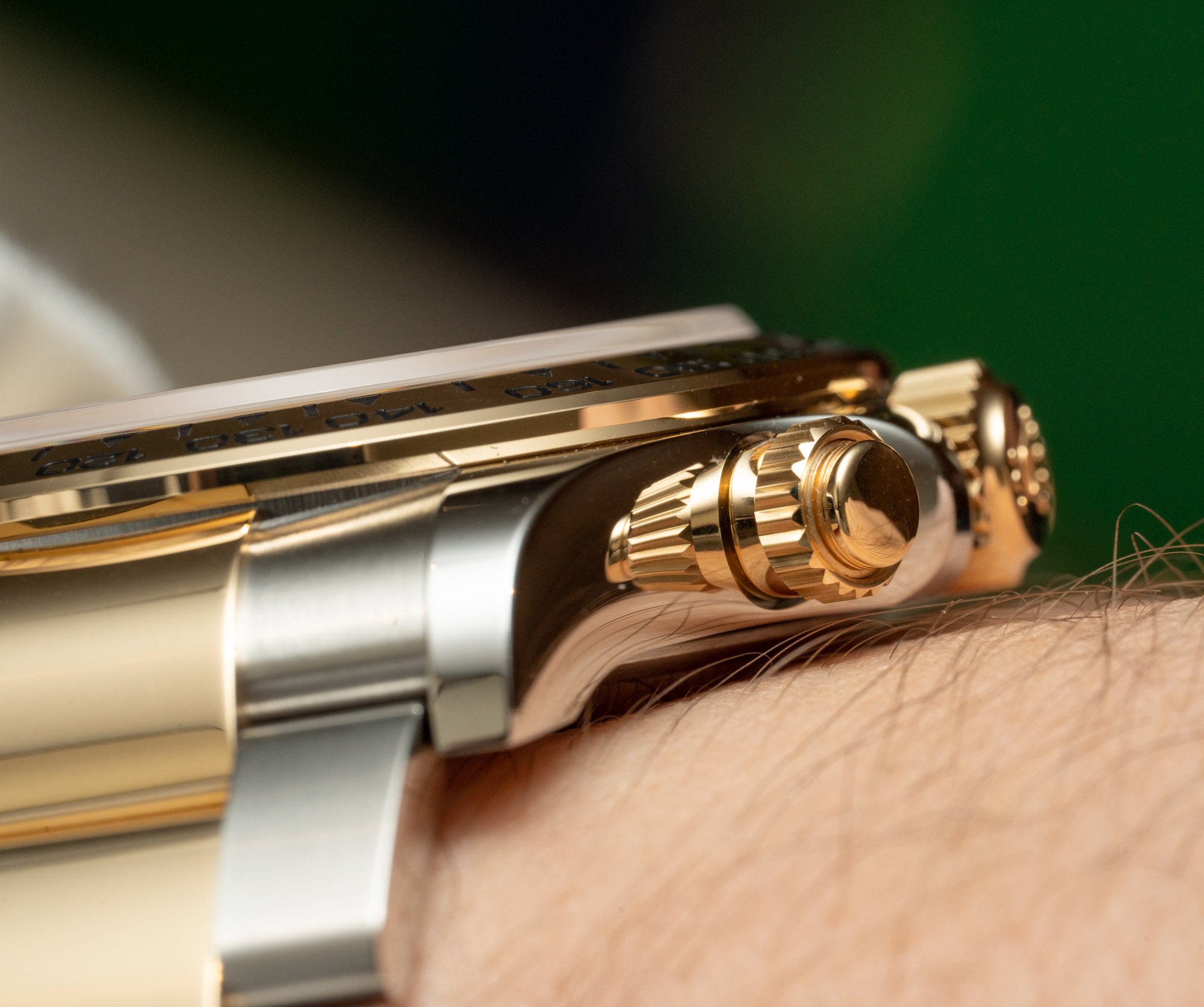 On the models with precious metal bezels, the edge is simply polished (in lieu of some awkward contrasting ring). Outside of those case changes, the models remain the same as the previous iterations. The screw-down Triplock crown and screw-down pushers ensure 100m water resistance, though I’ve always enjoyed the look of the Daytona (and any chrono with screw-down pushers) with the pushers unscrewed. Maybe that’s just me.
On the models with precious metal bezels, the edge is simply polished (in lieu of some awkward contrasting ring). Outside of those case changes, the models remain the same as the previous iterations. The screw-down Triplock crown and screw-down pushers ensure 100m water resistance, though I’ve always enjoyed the look of the Daytona (and any chrono with screw-down pushers) with the pushers unscrewed. Maybe that’s just me.
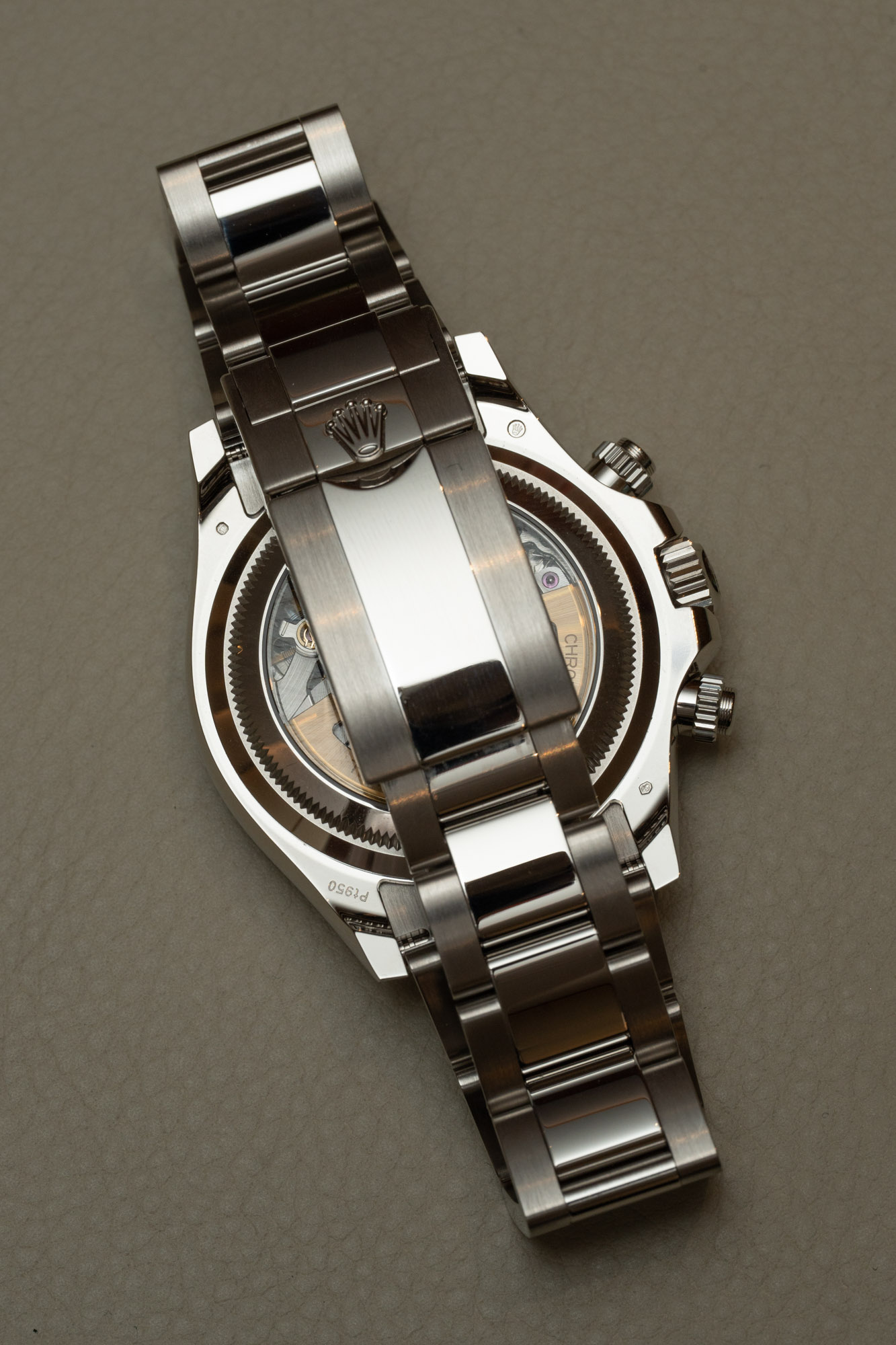 Another change that ties the watch together a bit more is that the etched scale on the bezel of the platinum and black-and-gold models feature PVD platinum or gold fill to match the cases—it’s a subtle change that you may not notice, but, when you do, adds a nice cohesiveness to the watch. The sapphire crystal and bracelets are also unchanged, with the former having AR coating and the latter featuring the very convenient and easy-to-use Easylink extension mechanism.
Another change that ties the watch together a bit more is that the etched scale on the bezel of the platinum and black-and-gold models feature PVD platinum or gold fill to match the cases—it’s a subtle change that you may not notice, but, when you do, adds a nice cohesiveness to the watch. The sapphire crystal and bracelets are also unchanged, with the former having AR coating and the latter featuring the very convenient and easy-to-use Easylink extension mechanism.
One thing to mention is that the platinum version is a heavy watch. You feel the weight immediately; I got used to it quickly, but once it was back off, I felt a lightness that was almost jarring. Moving to another model, like the two-tone 18k yellow gold and steel one seen here, was just as startling. Just don’t switch from the platinum Daytona to the new titanium Yacht-Master and you should be ok.
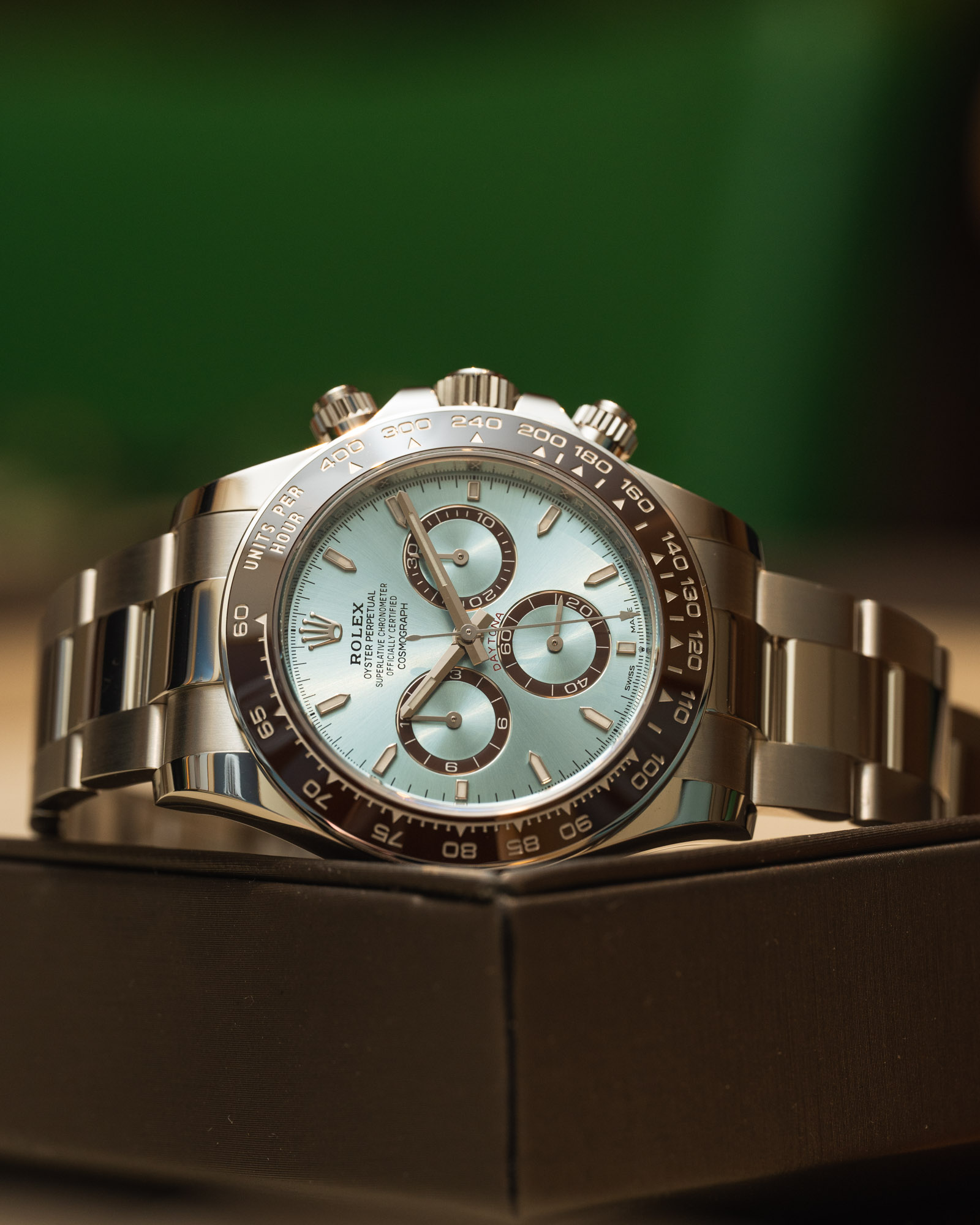 The unlikely combination of brown and ice blue on the platinum 126506—first seen 10 years ago when it debuted for the model’s 50th anniversary—is absolutely wonderful in person. You don’t think it’s going to work, and maybe it shouldn’t, but it does. The contrast between warm and cold offers a chromatic balance that surprises and pleases. As for the two-tone 126503, it’s frankly just not my jam. Lovely watch and all, but the white and steel and yellow gold is a bit bright and 90s for me. If I’m going gold, I’m going yellow on yellow on yellow.
The unlikely combination of brown and ice blue on the platinum 126506—first seen 10 years ago when it debuted for the model’s 50th anniversary—is absolutely wonderful in person. You don’t think it’s going to work, and maybe it shouldn’t, but it does. The contrast between warm and cold offers a chromatic balance that surprises and pleases. As for the two-tone 126503, it’s frankly just not my jam. Lovely watch and all, but the white and steel and yellow gold is a bit bright and 90s for me. If I’m going gold, I’m going yellow on yellow on yellow.
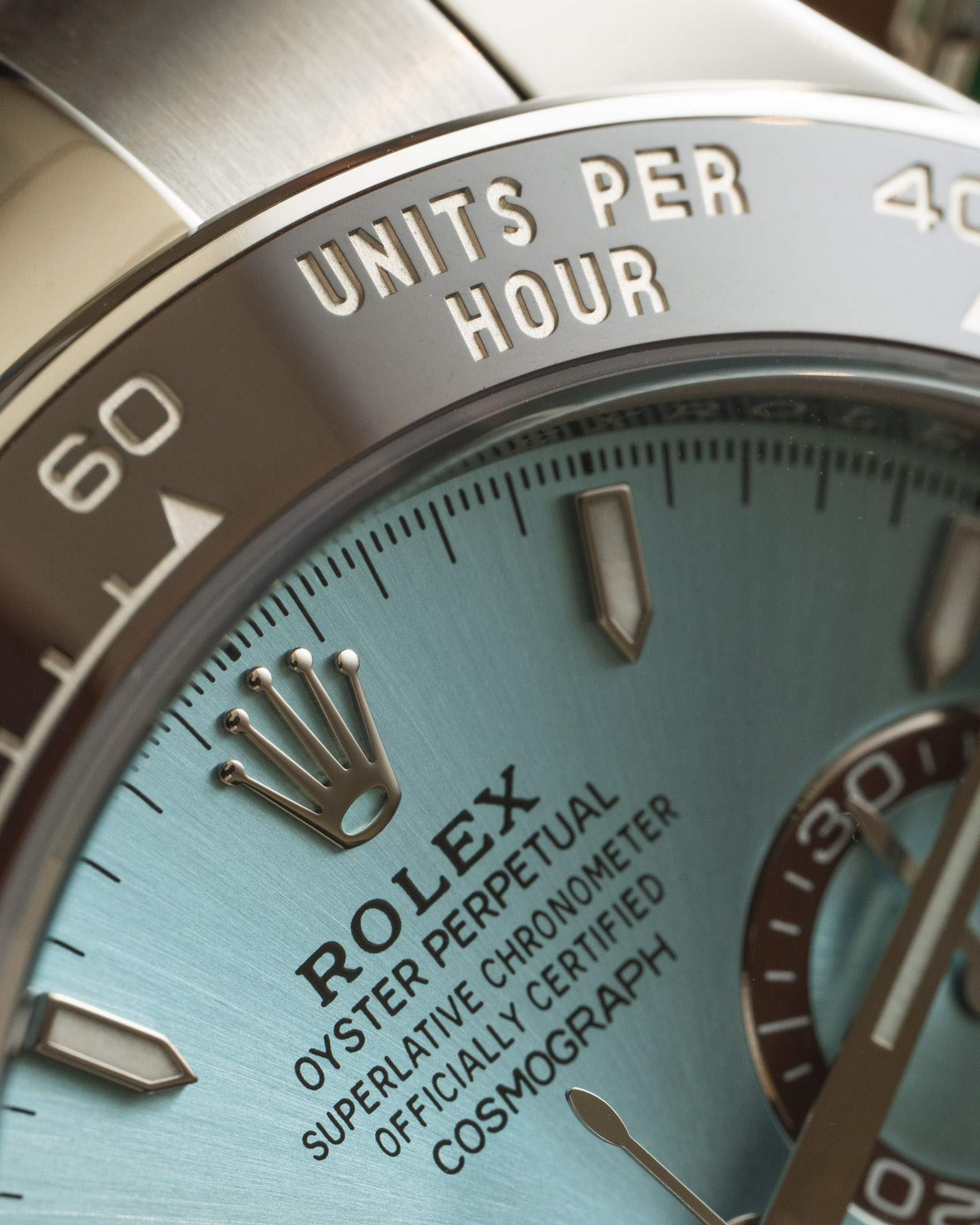 Anyway, the dials. Like the case, the dials at a glance seem the same, but there’s immediately a more spacious, dare I say lighter feel to them. Rolex has made small adjustments to the markers to make them longer and thinner, getting rid of the admittedly stubby indices that graced the previous generation (though they still feature the brand’s bright Chromalight lume). Further refreshing the dial, the chronograph registers’ rings have been thinned out. I think for people accustomed to the coziness (it was never cluttered, but the thicker markers and rings made it feel fuller) of the old Daytonas, this open dial can look a bit off. That was the sentiment of a few of my colleagues (almost all of whom are better versed in Rolex than I), but for my part, I’m partial to the new dials (mostly owing to not loving the chubby markers on the old dials).
Anyway, the dials. Like the case, the dials at a glance seem the same, but there’s immediately a more spacious, dare I say lighter feel to them. Rolex has made small adjustments to the markers to make them longer and thinner, getting rid of the admittedly stubby indices that graced the previous generation (though they still feature the brand’s bright Chromalight lume). Further refreshing the dial, the chronograph registers’ rings have been thinned out. I think for people accustomed to the coziness (it was never cluttered, but the thicker markers and rings made it feel fuller) of the old Daytonas, this open dial can look a bit off. That was the sentiment of a few of my colleagues (almost all of whom are better versed in Rolex than I), but for my part, I’m partial to the new dials (mostly owing to not loving the chubby markers on the old dials).
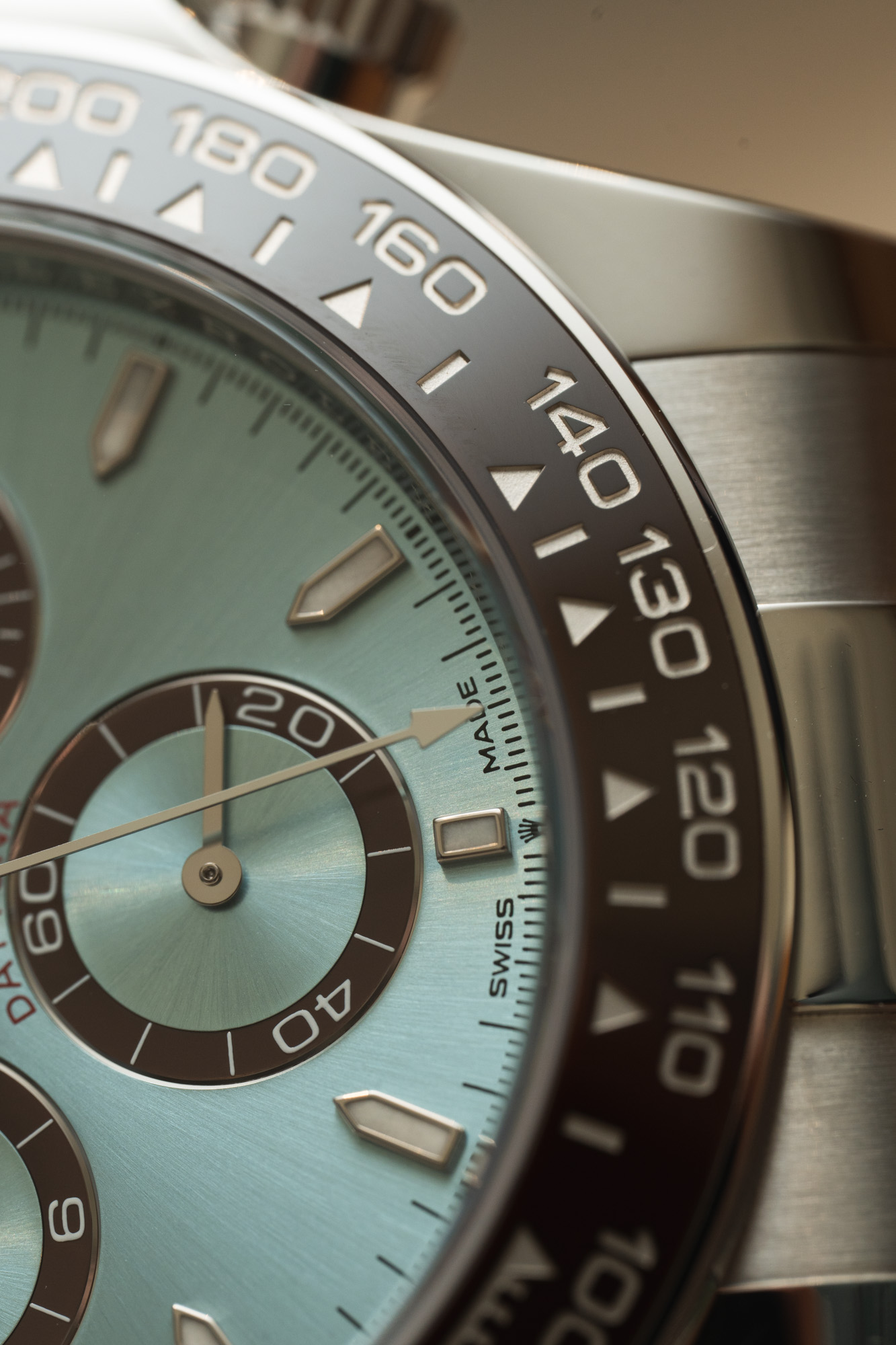
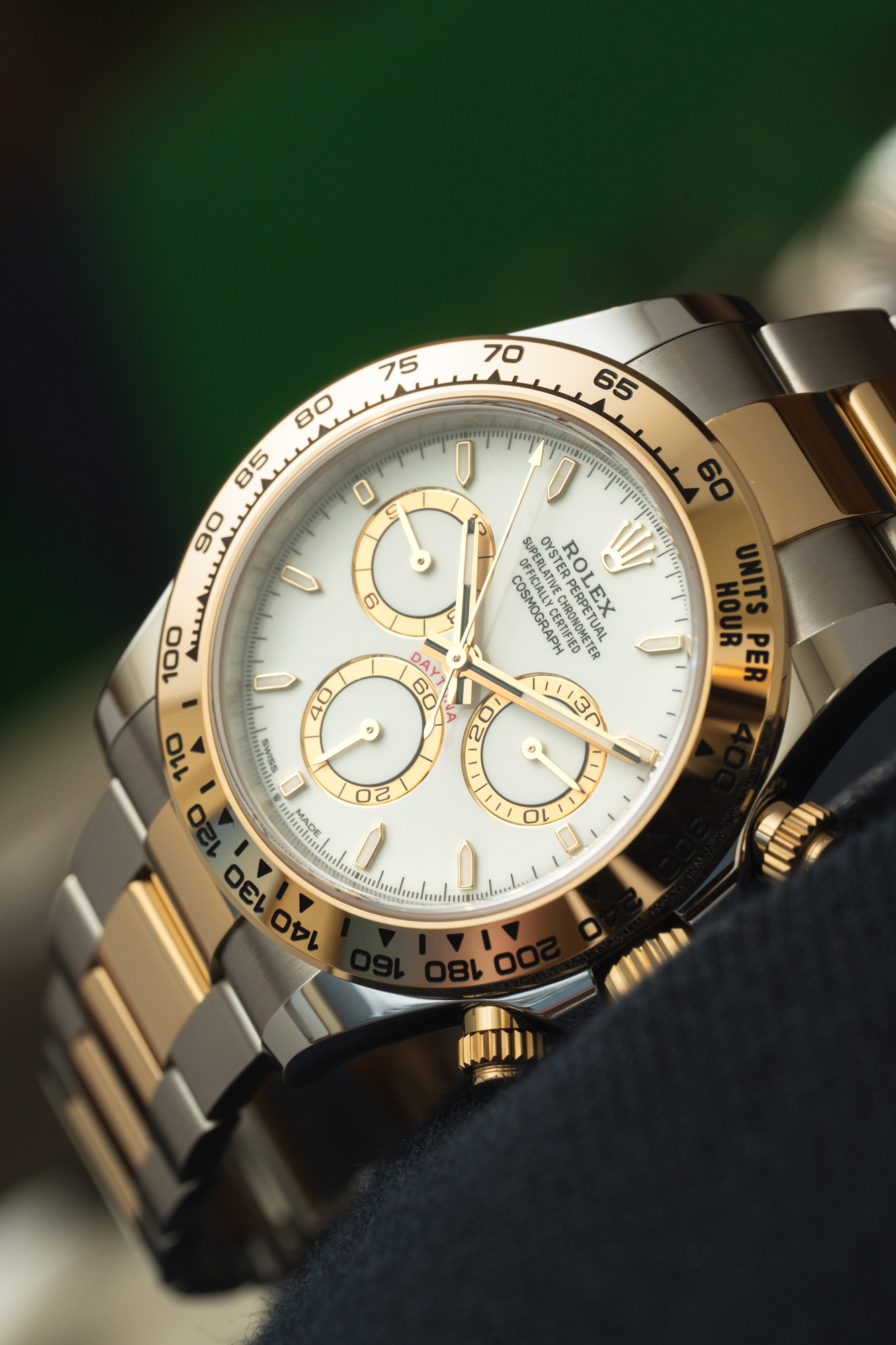 Did you really think I’d not mention the biggest change of all? The platinum 126506 Daytona now features—for the first time in a Rolex sports watch—a display caseback. Practically speaking, this is not important. You aren’t going to see it on wrist, and the movement frankly isn’t impressive enough to gawk at. When I had the watch in hand, the caseback was more remarkable for it being the first time it was done than for any other reason. Keep in mind, Rolex is very late to this game. However, the caseback is also not all about capturing a trend and people-pleasing (the latter of which Rolex is laughably bad at). A solid platinum caseback would be very expensive, and those potential savings, plus a chance to create a watch nerd frenzy, likely proved too tempting for the brand. People are going to be irrationally excited about this. (If it wasn’t clear, the other models have the same solid casebacks as ever.)
Did you really think I’d not mention the biggest change of all? The platinum 126506 Daytona now features—for the first time in a Rolex sports watch—a display caseback. Practically speaking, this is not important. You aren’t going to see it on wrist, and the movement frankly isn’t impressive enough to gawk at. When I had the watch in hand, the caseback was more remarkable for it being the first time it was done than for any other reason. Keep in mind, Rolex is very late to this game. However, the caseback is also not all about capturing a trend and people-pleasing (the latter of which Rolex is laughably bad at). A solid platinum caseback would be very expensive, and those potential savings, plus a chance to create a watch nerd frenzy, likely proved too tempting for the brand. People are going to be irrationally excited about this. (If it wasn’t clear, the other models have the same solid casebacks as ever.)
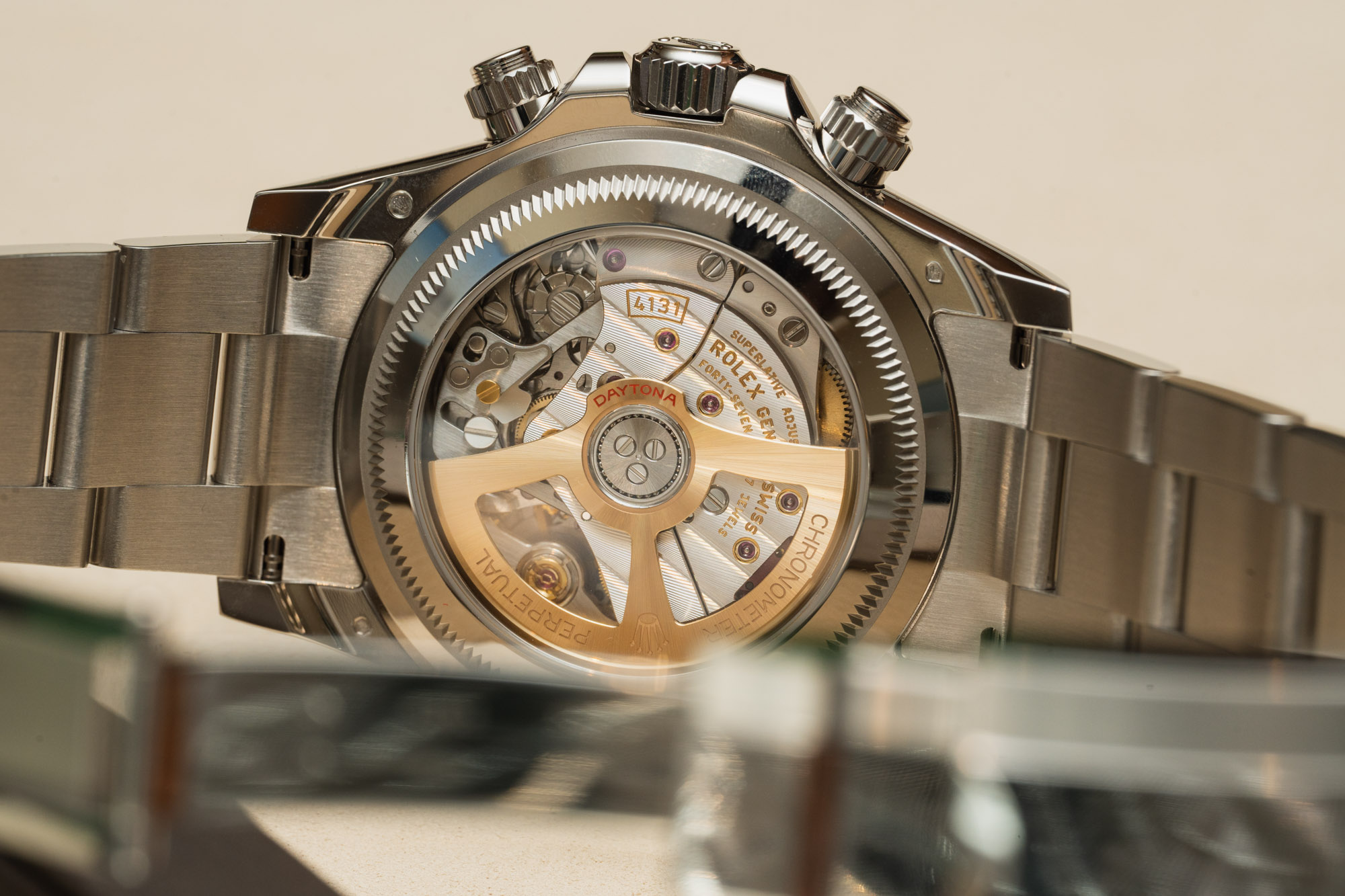 Looking through the caseback, as I mentioned, isn’t that much of a show, but it is a bit better than you would’ve gotten from the past generation of Daytonas. That’s because the current generation features the updated caliber 4131 automatic chronograph movement. This new caliber, like the watches it powers, is an evolution, not a revolution. The specs are identical—28,800 vph with 72 hours power reserve—and it still has all the Rolex bells and whistles, including the Chronergy escapement, Paraflex antishock system, and blue Parachrom hairspring. It is also still a Superlative Chronometer, certified not just by COSC, but by Rolex’ stringent in-house testing to -2/+2 seconds per day. But incremental updates mean it uses fewer components than the 4130, which translates to greater reliability (fewer things to break).
Looking through the caseback, as I mentioned, isn’t that much of a show, but it is a bit better than you would’ve gotten from the past generation of Daytonas. That’s because the current generation features the updated caliber 4131 automatic chronograph movement. This new caliber, like the watches it powers, is an evolution, not a revolution. The specs are identical—28,800 vph with 72 hours power reserve—and it still has all the Rolex bells and whistles, including the Chronergy escapement, Paraflex antishock system, and blue Parachrom hairspring. It is also still a Superlative Chronometer, certified not just by COSC, but by Rolex’ stringent in-house testing to -2/+2 seconds per day. But incremental updates mean it uses fewer components than the 4130, which translates to greater reliability (fewer things to break).
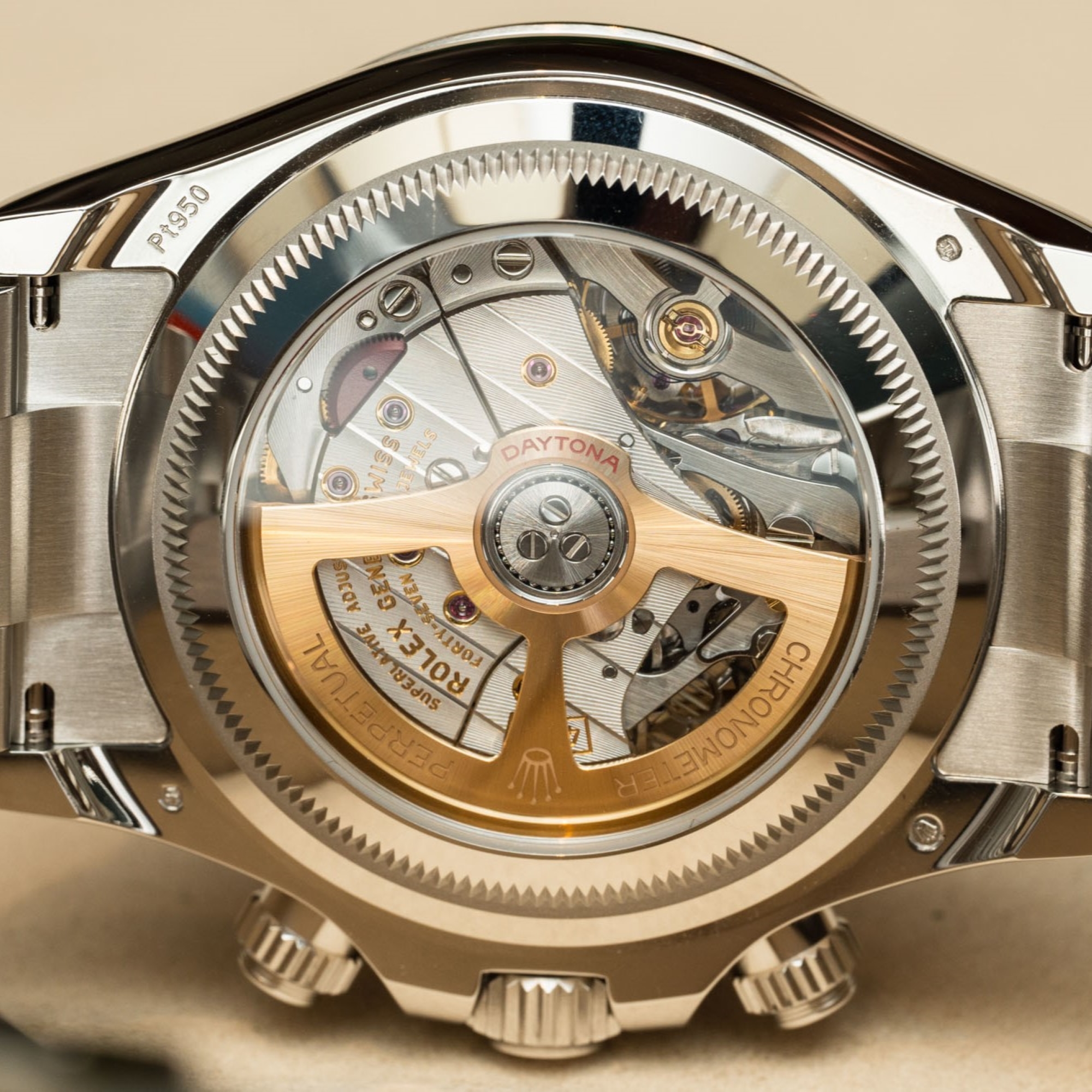
The biggest updates made to the 4130, though, are cosmetic and serve to benefit the caseback ogler: a cutout 18k gold oscillating weight (the 4130’s was steel and solid) and a new style of striping the brand is calling “Rolex Côtes de Genève,” which sees narrow, polished bands added between the traditional stripes. They can be hard to see in pictures and, to be honest, they were hard to see in person, relying on the light as they do.
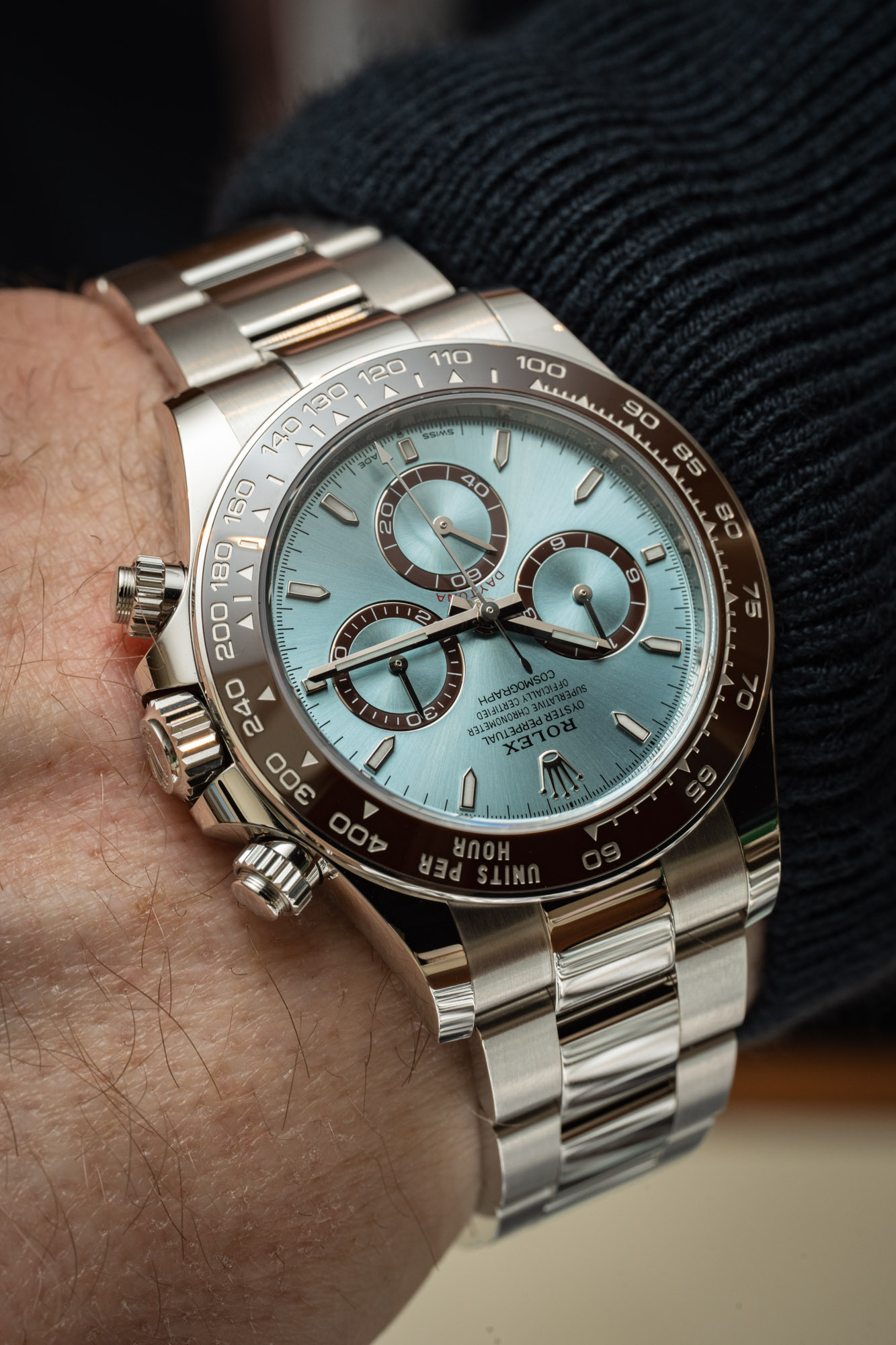
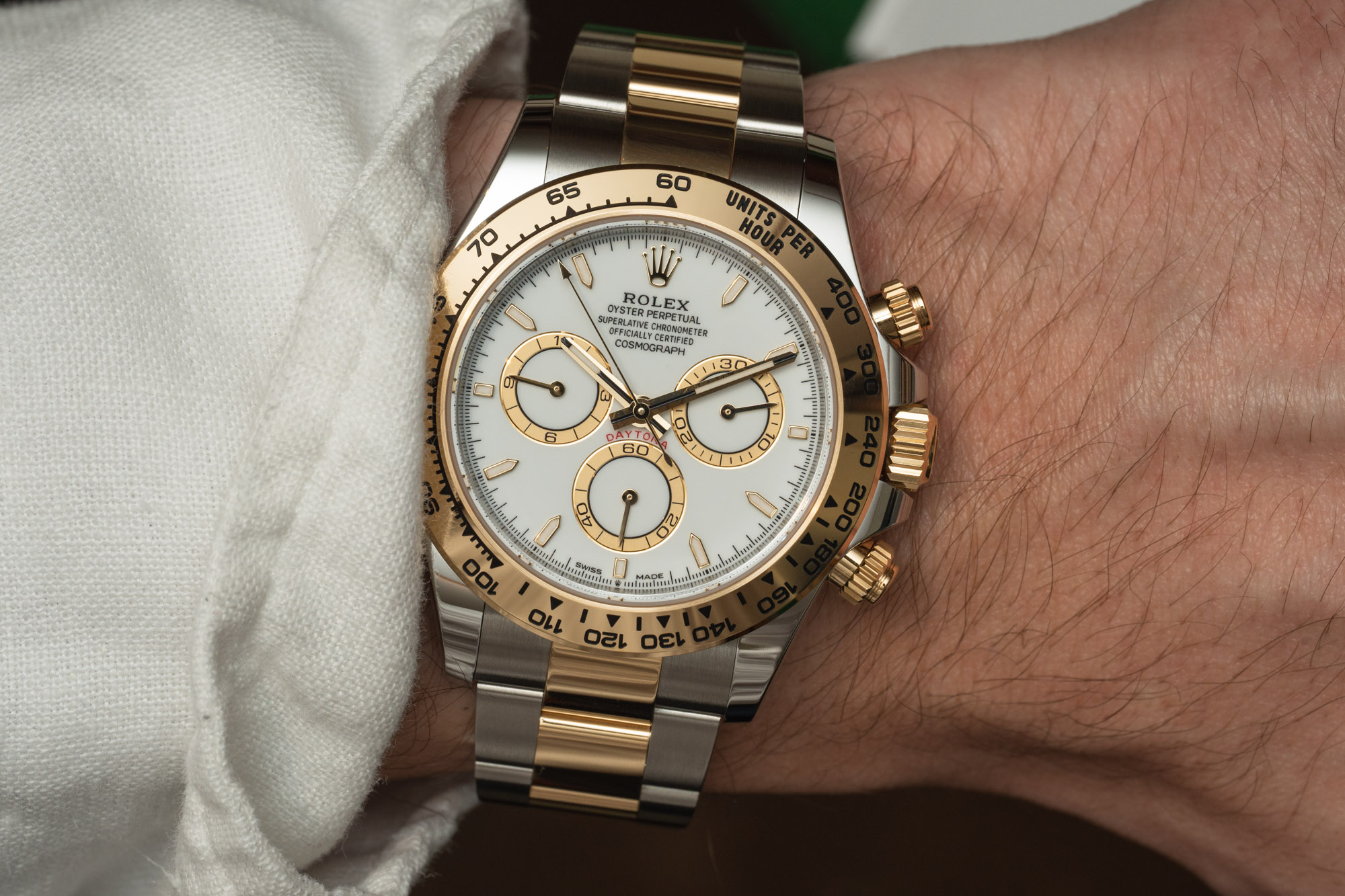 Minor as most of the updates may be, I found myself feeling like the Daytona had been rejuvenated — like it’s had a spa day and is glowing brighter than ever. The added shine of the ring around the bezel and the airiness of the dial simply bring a renewed energy to the model. Change is hard, but this update seems a bit more worthwhile than the last round. Plus, there’s that display caseback, if you go for that kind of thing. The Rolex Cosmograph Daytona reference 126503 two-tone is priced at $19,500 USD, while pricing for the platinum reference 126506 is on request (10 years ago, the 50th-anniversary edition retailed for $75,000, so I’d expect it to be above that). Cost of entry to the model is now set at $15,100 USD for the steel variant. For more information, please visit the brand’s website.
Minor as most of the updates may be, I found myself feeling like the Daytona had been rejuvenated — like it’s had a spa day and is glowing brighter than ever. The added shine of the ring around the bezel and the airiness of the dial simply bring a renewed energy to the model. Change is hard, but this update seems a bit more worthwhile than the last round. Plus, there’s that display caseback, if you go for that kind of thing. The Rolex Cosmograph Daytona reference 126503 two-tone is priced at $19,500 USD, while pricing for the platinum reference 126506 is on request (10 years ago, the 50th-anniversary edition retailed for $75,000, so I’d expect it to be above that). Cost of entry to the model is now set at $15,100 USD for the steel variant. For more information, please visit the brand’s website.

